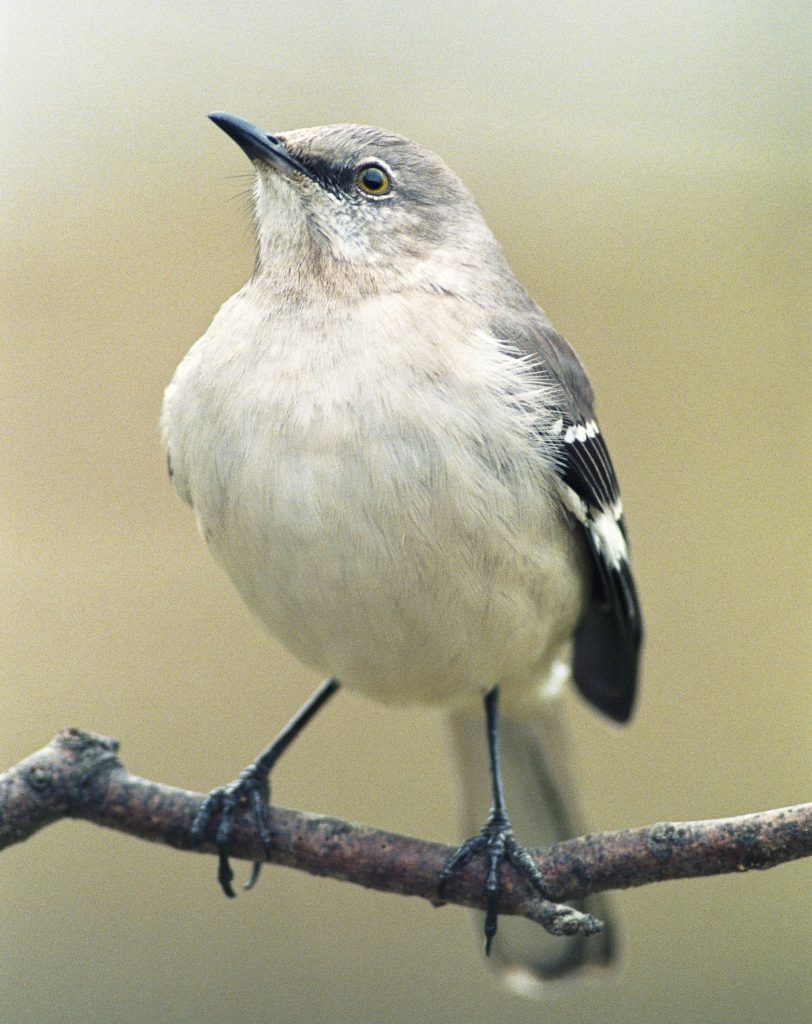Spring must be here, as the Mockingbirds are singing their hearts out, but not always when we want to enjoy their song. As a number of friends have “heard” of late, these most vocal of the “mimic” thrushes in our area will sing throughout the day with some singing all night! From what researchers have learned about this odd behavior, it appears to be the unmated males that sing after the sun sets, and more commonly during a full moon. Go figure, right? Are they hoping that an unmated female will be impressed with their non-stop singing? Perhaps they want to keep the day-time mated Mockingbirds from getting a good night sleep. Well, more for the researchers to determine I believe. In any case, you have to respect the tenacity of Northern Mockingbirds on many levels, as they are one of the most noticed birds in our everyday lives – anywhere you choose to look.
If not seen chasing each other around the lawn or parking lot or chasing some other bird or cat, just in case these interlopers were unaware of who is boss, Mockingbirds are best known for their song: a varied repertoire of bits and pieces of other birds’ songs. Phrases may also include human-made sounds like that of a doorbell or lawn mower. These behaviors are reflected in its scientific name – Mimus polyglottos or many-tongued mimic. Of the three species found locally within the family known as mimic thrushes, Mockingbirds are the in-your-face bird. Brown Thrashers and Gray Catbirds are far less noticed, as they prefer to lurk within the bushes. These latter birds are more likely heard than seen and you can have fun listening for them. All of these thrushes use melodious songs to help with mating or defining territory. Each also uses a call note, to help keep track of each other or for alarm. As the name implies, Catbirds use a “mew” call note while Brown Thrashers “smack” at you. The fun is in listening for their songs and being able to tell the difference, especially between Mockingbirds and Thrashers. Mockingbird song is a series of phrases, repeated from 3-5 or more times. Thrashers repeat phrases twice, sometimes three times and are most often heard or seen singing from the tops of nearby trees early in the morning. You can impress your friends by listening and telling them apart by counting phrases. Catbird song is a less structured series of phrases and squeaks but is nonetheless melodious.
So, what to do about the all-night Mockingbirds, you say? Well, you know that you cannot kill a Mockingbird, right? My Grandmother called them “God’s Birds” because they know all the other birds’ songs. My Mama’s approach to an all-night bird near my window in the age of no AC was to tie a string to the bottom branch of the tree and through my window. I would pull hard, which caused the bird to pause for a few minutes at a time. I frankly cannot remember exactly how many repeats of this I had to do to fall asleep but suffice it to say it was more than 3-5!!! But hey, the Mockingbird lived 😊
Long live the State Bird of Mississippi – Northern Mockingbird.
Hope to see you in our great outdoors!!! Photo Credit: Bill Stripling



